Descriptive Statistics
For variables where a Cronbach’s alpha \(\geq\) 0.7 could not be attained, we chose the item with the highest item-total correlation or, in case of Internal and External Control Conviction, one of the items based on content.
Correlation analysis of continous variables
As becomes apparent from the descriptive statistics, response data is not normally distributed. Therefore, we use Spearman’s rank correlation.
Correlation of all model variables, different Knowledge measures and Behavior
This correlation table contains all variables corresponding to constructs in the model, albeit differently specified (see Descriptive Statistics table). Further, Knowledge is specified differently: Instead of a pseudo-continuous scale with 1 corresponding to an incorrect answer, 2 to a ‘don’t know’ and 3 to an correct answer, there are counts of how often a respondent answered correctly, incorrectly, or ‘don’t know’. There is also a Subjective Knowledge variable which measures the amount of COVID-19 related knowledge a respondent perceives to possess.
Most of the correlations mirror relationships are already expressed in the model. Additionally, there are the following correlations which all are significant at the p < 0.001 level:
Behavior is weakly correlated with Perceived Susceptibility and Correct Knowledge, moderately with Perceived Severity and Injunctive Norm and, negatively and in the moderate magnitude, with all dimensions of Distrusting Beliefs. The same correlations, if slightly larger in value, can be observed for Behavioral Intention.
All Response Beliefs lower-order constructs are intercorrelated, with Perceived Response Costs showing the relatively weaker intercorrelation. Perceived Self-Efficacy and Perceived Response Efficacy are weakly correlated with Perceived Susceptibility and moderately correlated with Perceived Severity. They are also moderately to strongly correlated with all normative variables, and weakly correlated with Correct Knowledge. Perceived Response Costs is weakly correlated with Perceived Severity and the normative variables, and weakly to moderately negatively correlated with the distrust variables.
Perceived Susceptibility and Perceived Severity are moderately intercorrelated. Perceived Susceptibility is weakly correlated with Personal Moral Norm and Injunctive Norm, and weakly negatively correlated with the Distrusting Beliefs constructs. Perceived Severity on the other hand is strongly correlated with Personal Moral Norm, moderately correlated with Descriptive and Injunctive Norm, moderately negatively correlated with Distrusting Beliefs and weakly correlated with Correct Knowledge and, weakly negatively, Incorrect Knowledge.
All normative variables are moderately intercorrelated. Additionally, they are all moderately and negatively correlated with the Distrusting Beliefs variables. Personal Moral Norm and Injunctive Norm are weakly correlated with Correct Knowledge, and Personal Moral Norm is weakly negatively correlated with Incorrect Knowledge.
All Distrusting Beliefs variables are strongly intercorrelated. Distrusting Beliefs Competence and Distrusting Beliefs Integrity are also weakly and negatively correlated with Correct Knowledge.
Subjective Knowledge is weakly and negatively correlated with the number of questions respondents did not know an answer to. Finally, not surprisingly, there are negative correlations between the counts of correct, incorrect and ‘don’t know’ answers.
Correlation of all continuous variables with behavior and behavioral intention
Next, we focus in on the correlations between all continuous variables and Behavioral Intention as well as Behavior and the different types of Behavior. Apart from the correlations already discussed, it becomes apparent that correlations differ between the different types of Behavior. For example, usage of the warning app shows the weakest correlation with almost all model variables.
None of the Big Five variables show a noticeable significant correlation with any type of Behavior or Behavioral Intention, nor do Internal or External Control Conviction Further, there are no perceptible correlations for age, the household size, the number of children living in the household, the number of acquaintances infected with or hospitalised because of COVID-19, or the count or incidence in the respondent’s administrative district at the time of either survey.
Kruskal-Wallis test and Wilcoxon signed-rank test for categorical variables
As the data for Behavior is non-parametric, we use the Kruskal Wallis test, the Pairwise Wilcoxon Rank Sum test and the Wilcoxon-Mann-Whitney test to detect group differences.
Gender
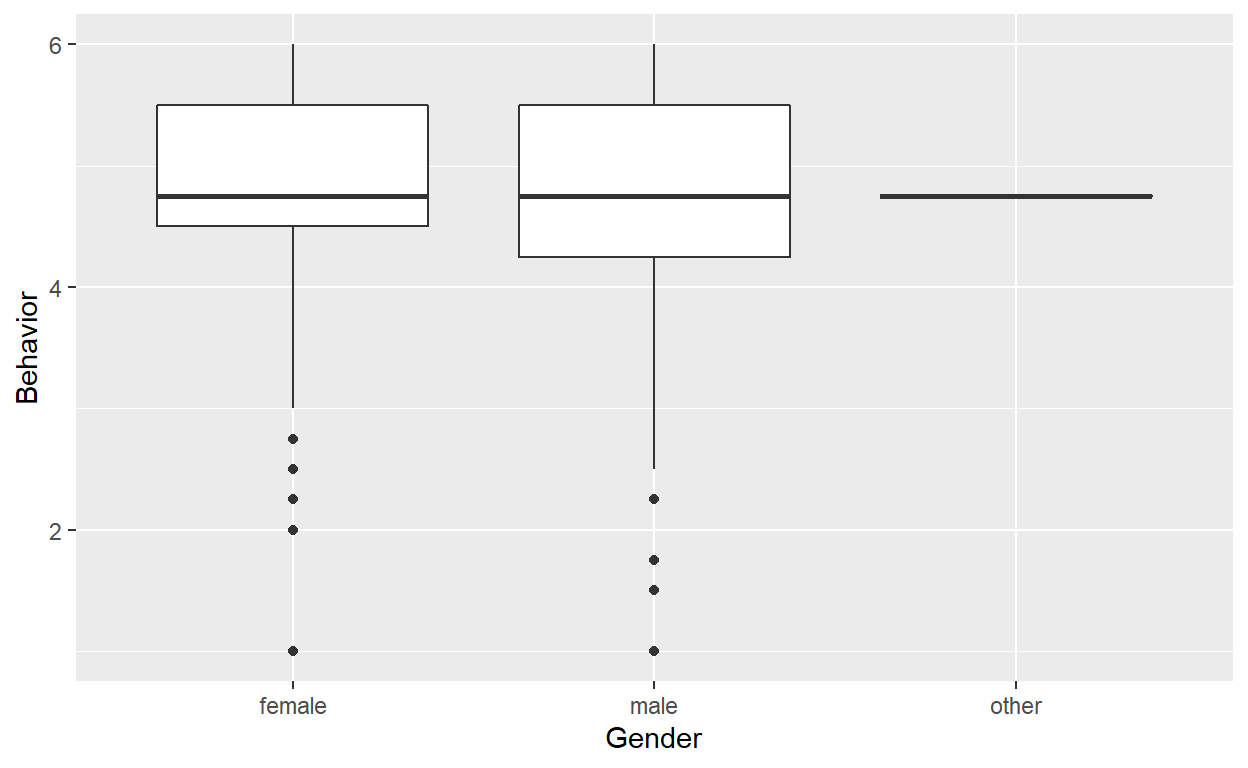
There seems no notable difference for gender.
Education
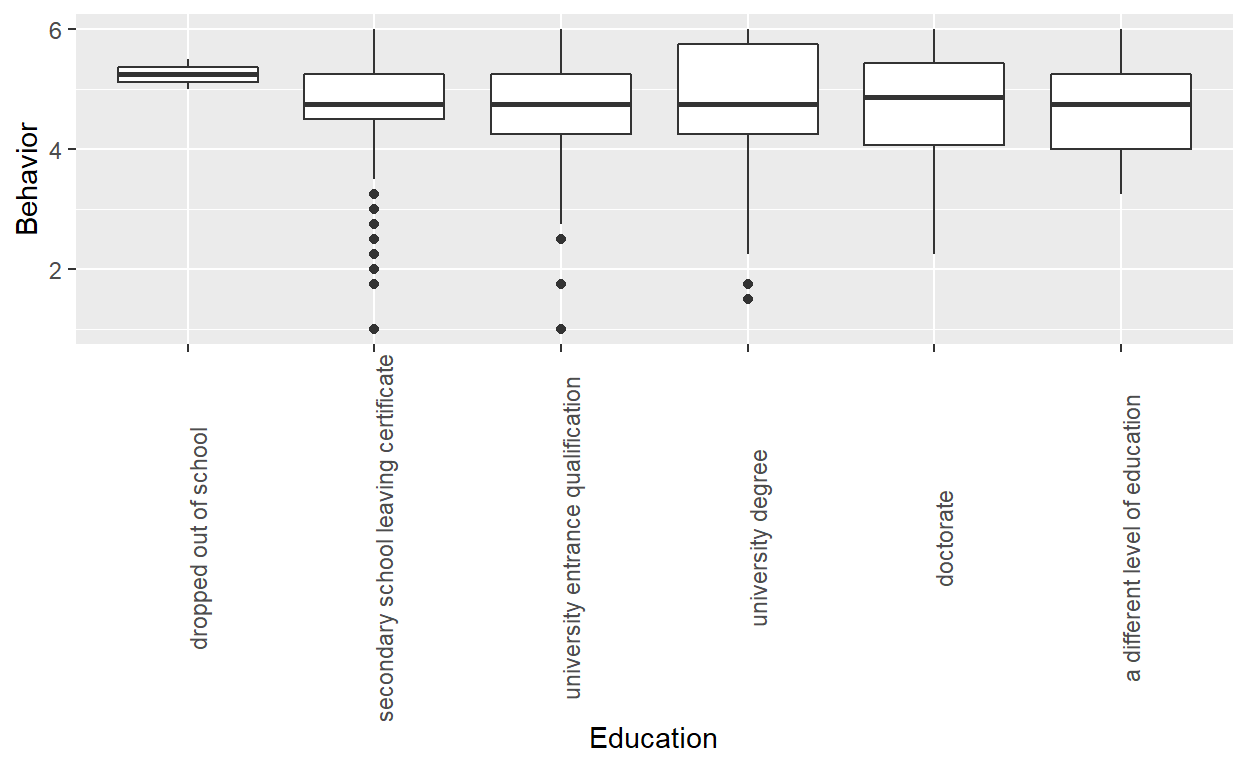
Occupation
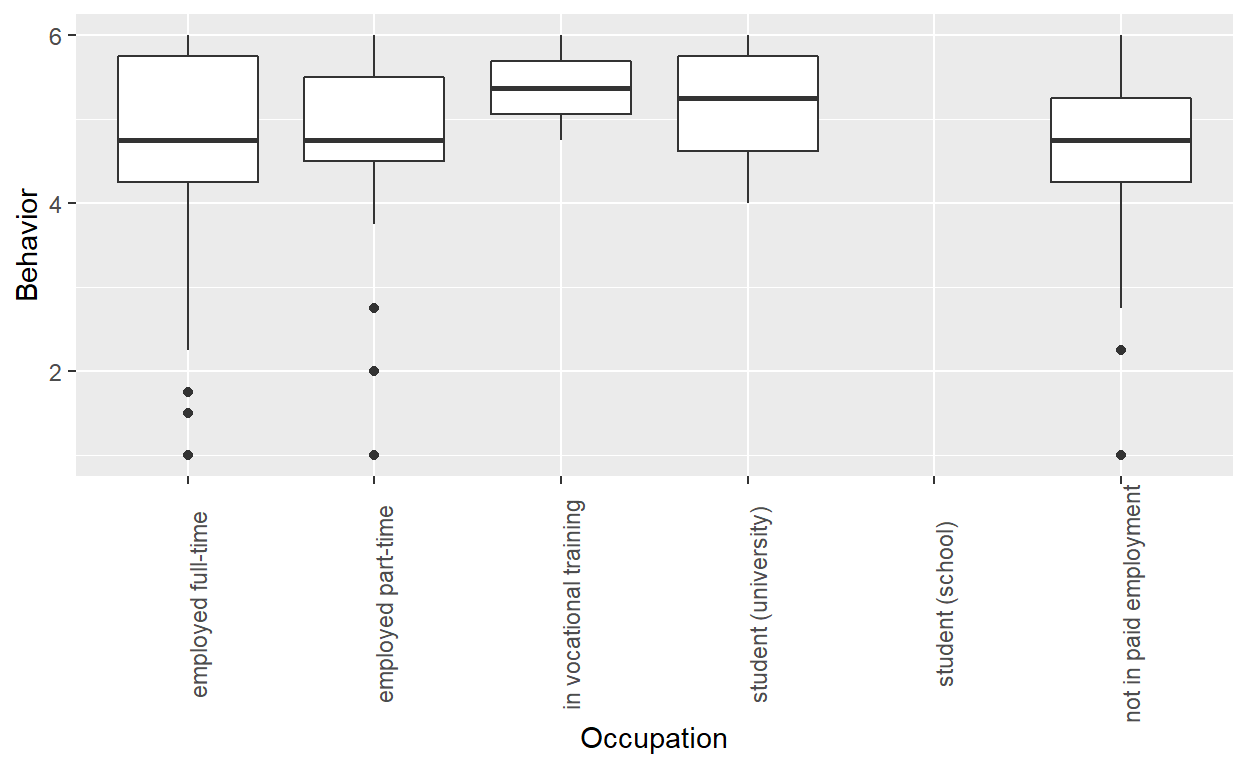
Neither is there a significant difference for education or occupation.
Income
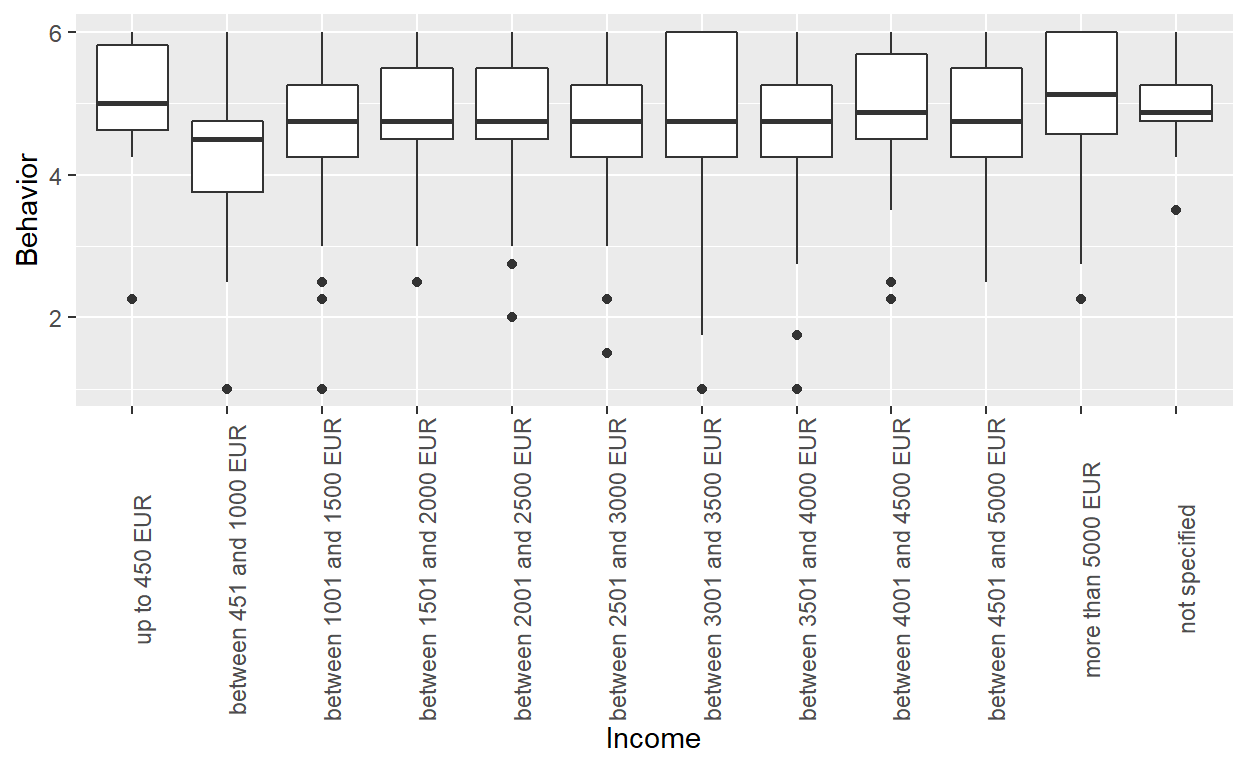
The difference between the second to lowest income group and the ‘not specified’ group is barely significant (p=0.026) but will not be more closely examined.
Own Infection Risk
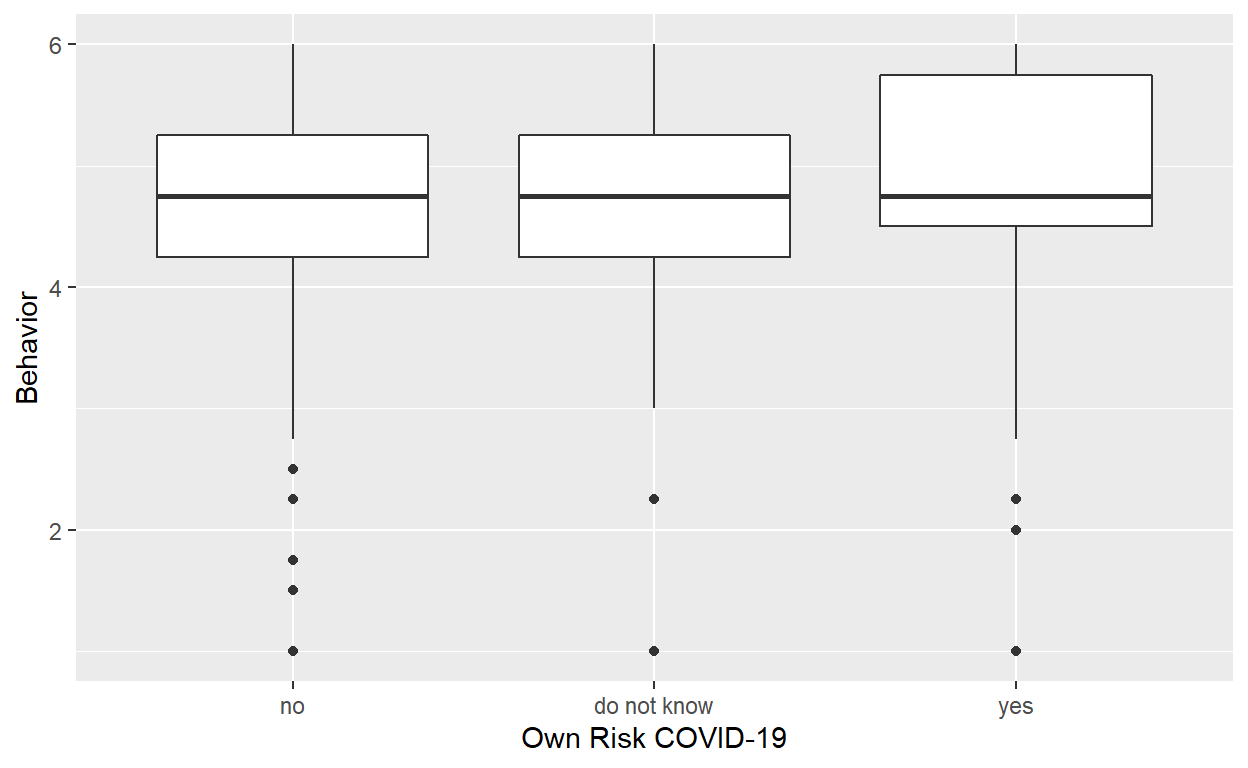
There is a barely significant different in Behavior between people who know they are at risk for an especially severe COVID-19 infection and those who know that they are not.
Own Infection History
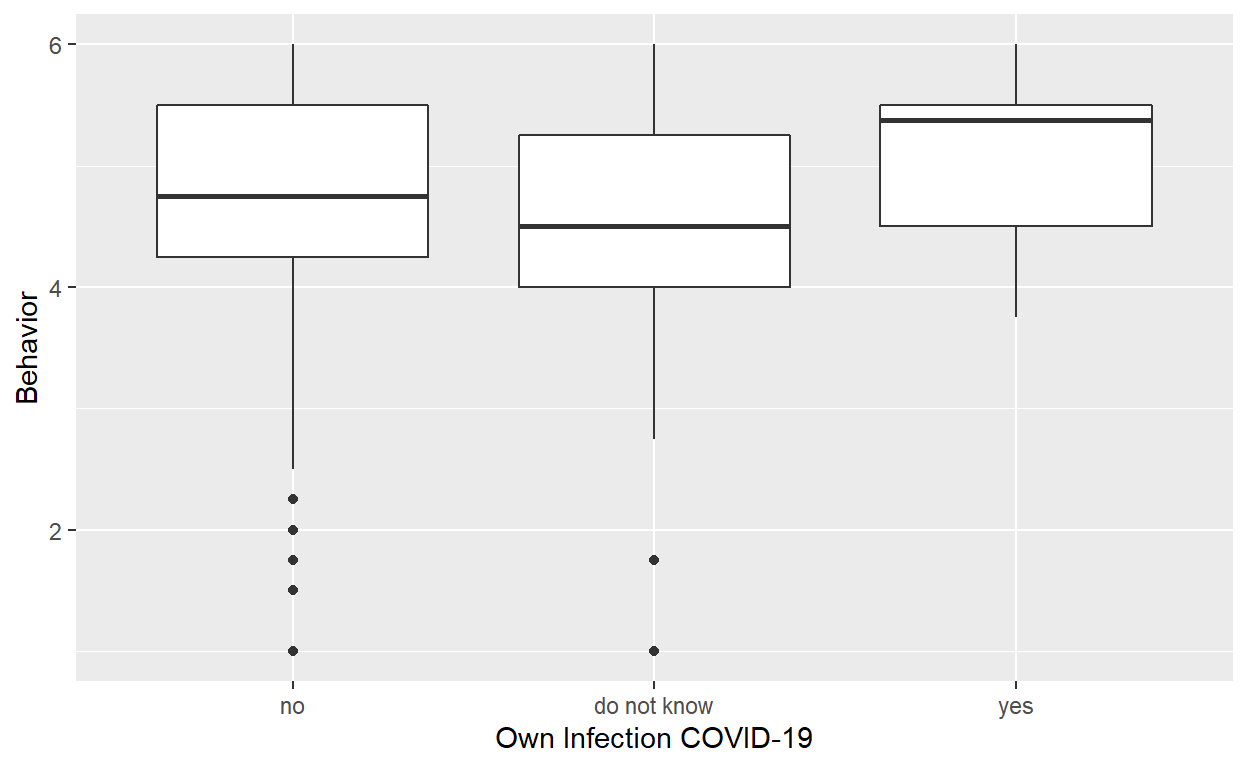
There is no significant differences in Behavior for people who have already been infected with COVID-19, those who have not or those who do not know.
Own Hospitalisation
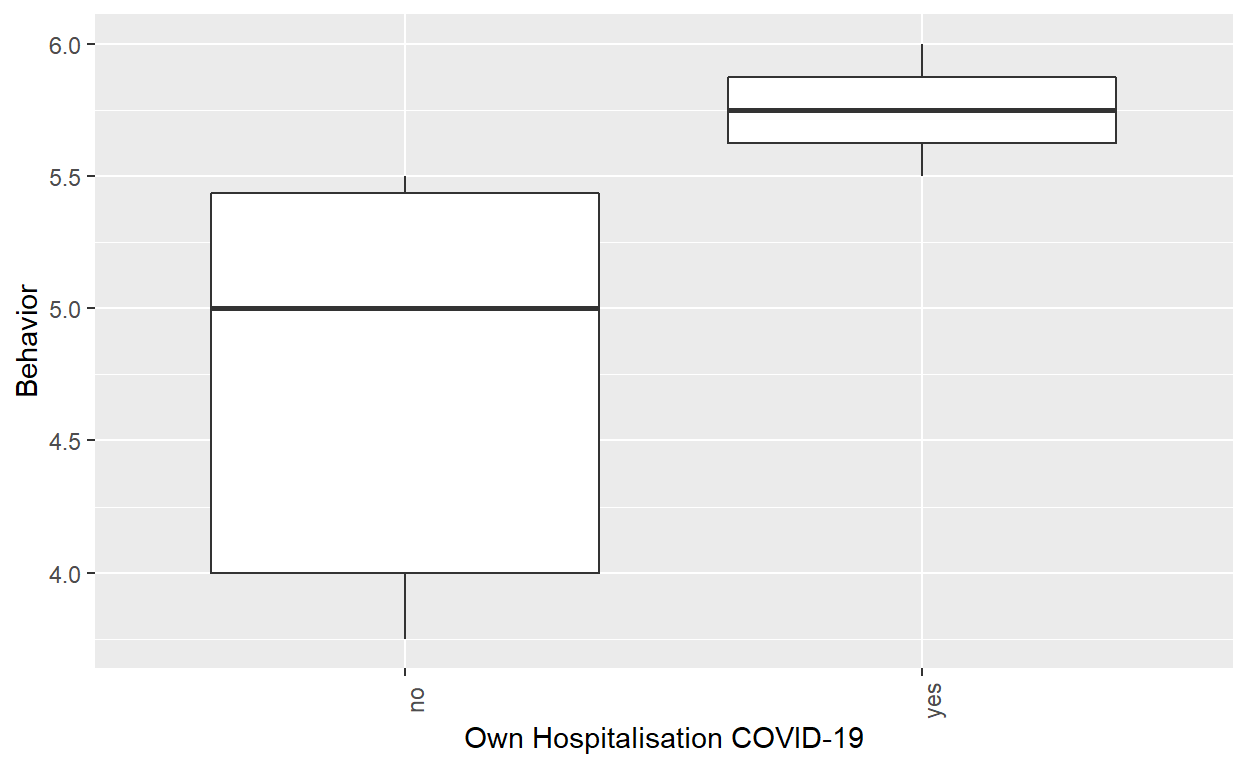
Wilcoxon rank sum test with continuity correction
data: Behavior by Own Hospitalisation COVID-19
W = 1, p-value = 0.1219
alternative hypothesis: true location shift is not equal to 0Although at face value, Behavior of respondents who have been hospitalized for a COVID-19 infections seems to be noticeably higher than if respondents who have not, this difference is not significant. This is likely due to the low number of respondents who answered this question (n = 21).
Cohabitation with High-Risk Person
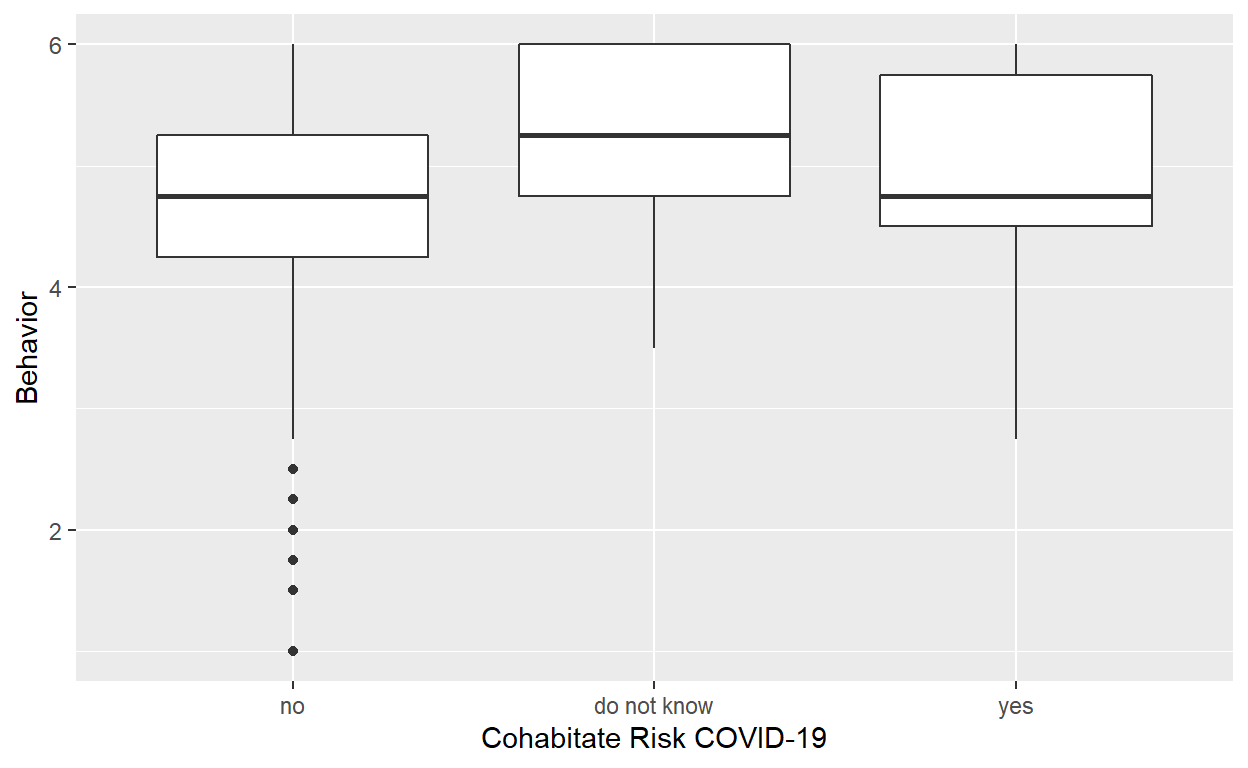
Respondents who know that they live with a high-risk person and those who are not sure show a slightly significantly (p < 0.05) higher Behavior than respondents who think they do not live with a high-risk person.
Working from Home
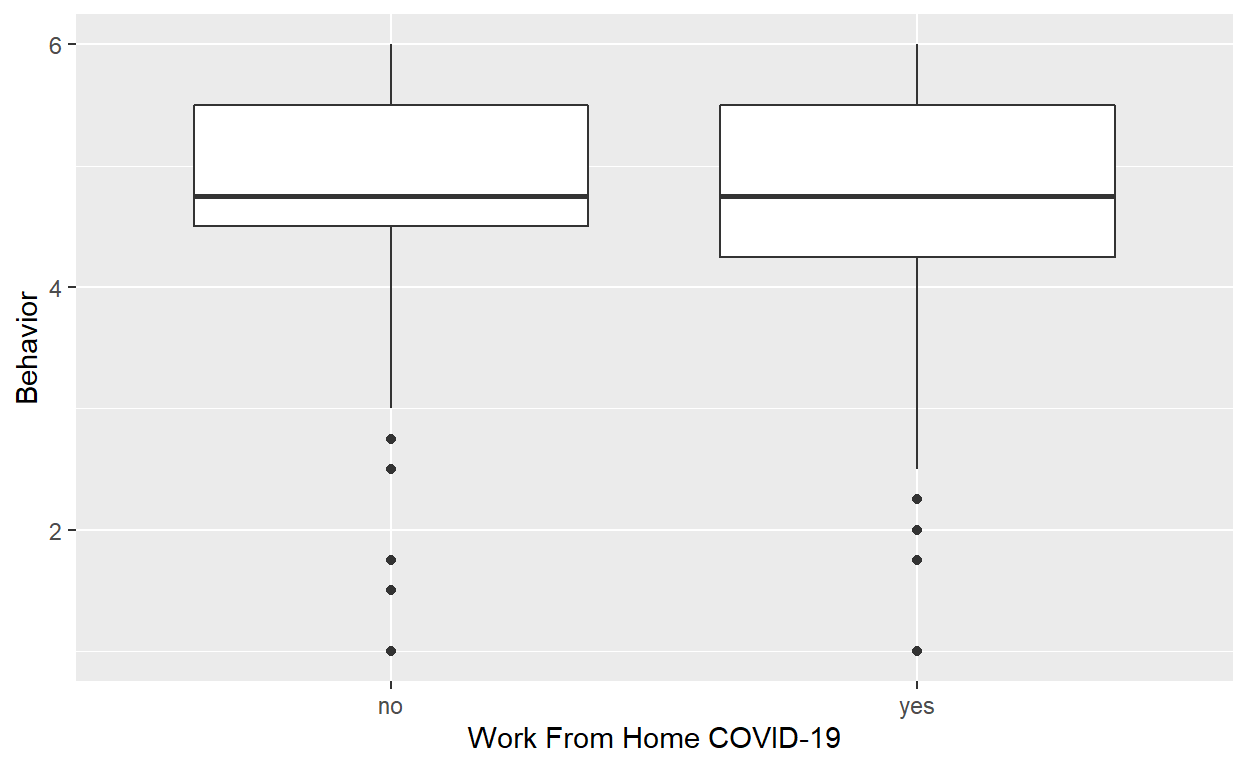
There is no significant difference in Behavior between respondents who have to work or go to school outside and those who do not.
Knowledge
In this section, we examine the relationship between specific questions and Behavior as well as Subjective Knowledge.
Fever is a symptom of coronavirus disease. Correct answer: True.
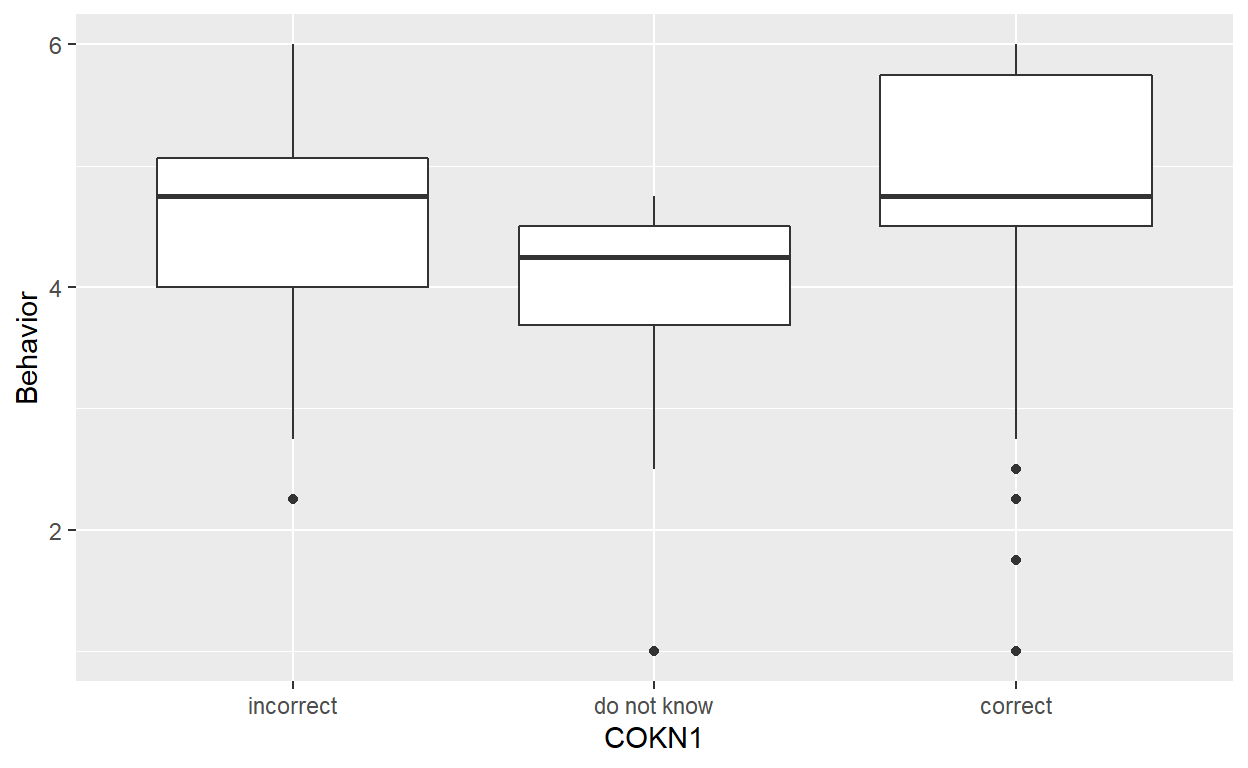
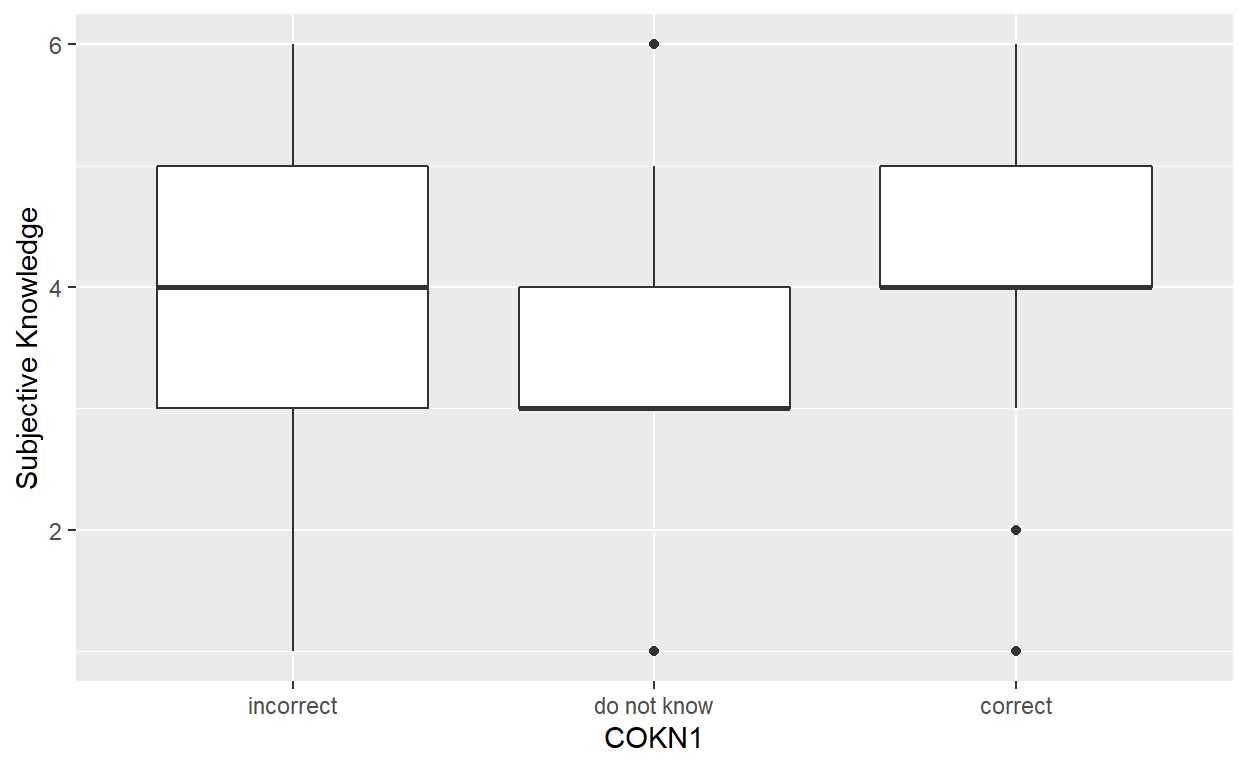
Respondents who are not sure about this question show significantly less behavior than those who do. They also report significantly lower Subjective Knowledge.
An effective vaccine against the virus is currently available. Correct answer: True.
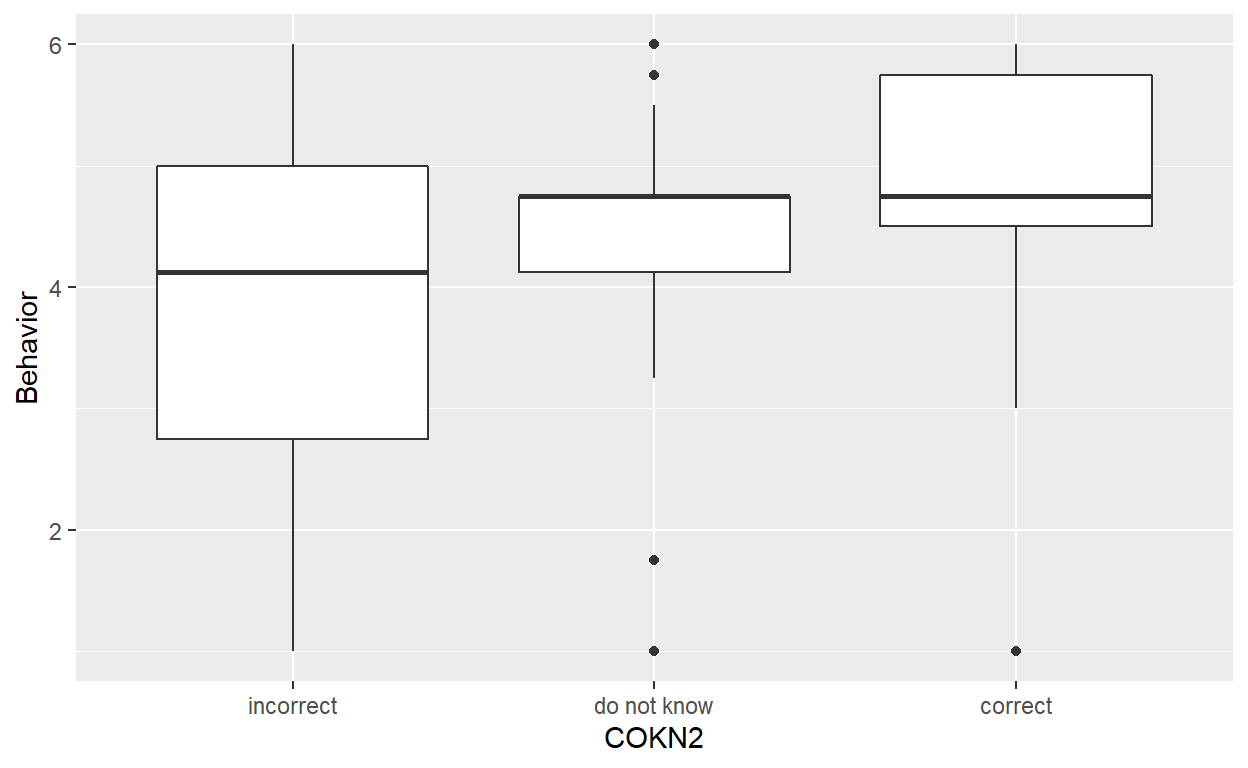
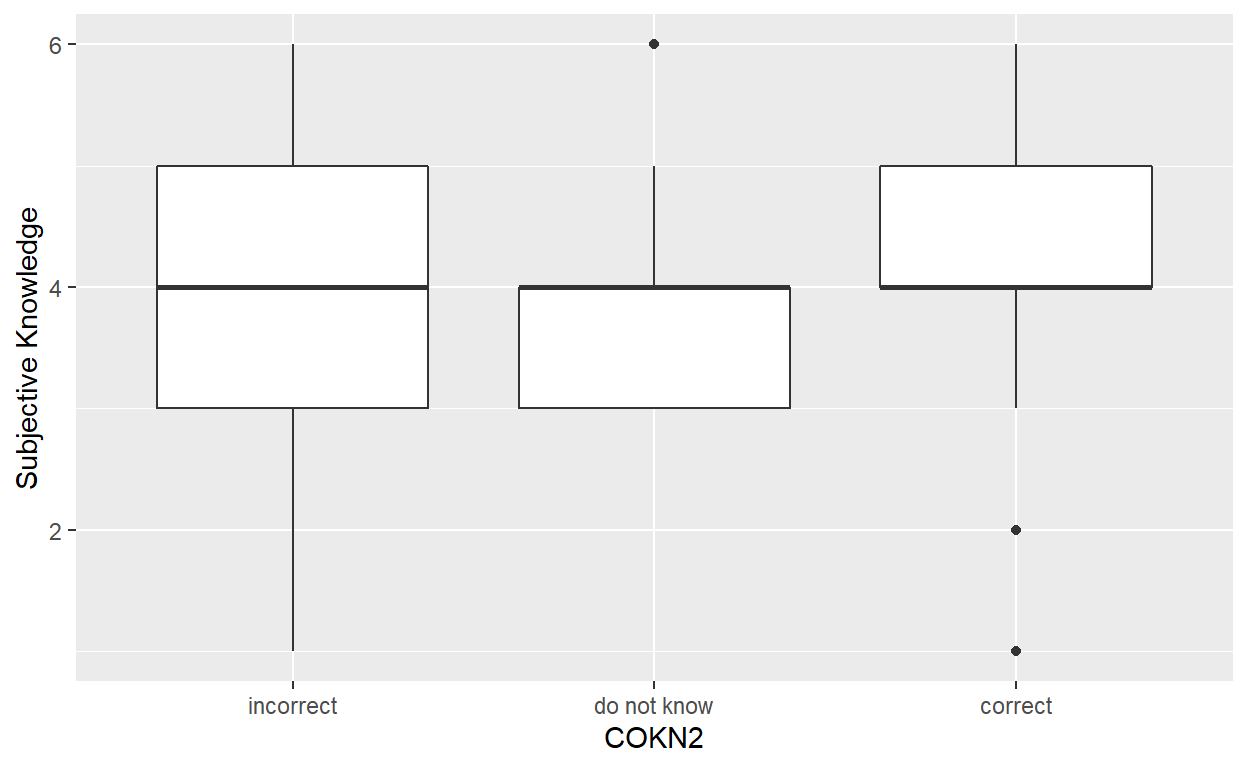
Respondents who are not correctly or misinformed about this, show significantly less Behavior than respondents who do. Respondents who chose don’t know also report lower Subjective Knowledge.
The disease could be transmitted from asymptomatic persons. Correct answer: True.
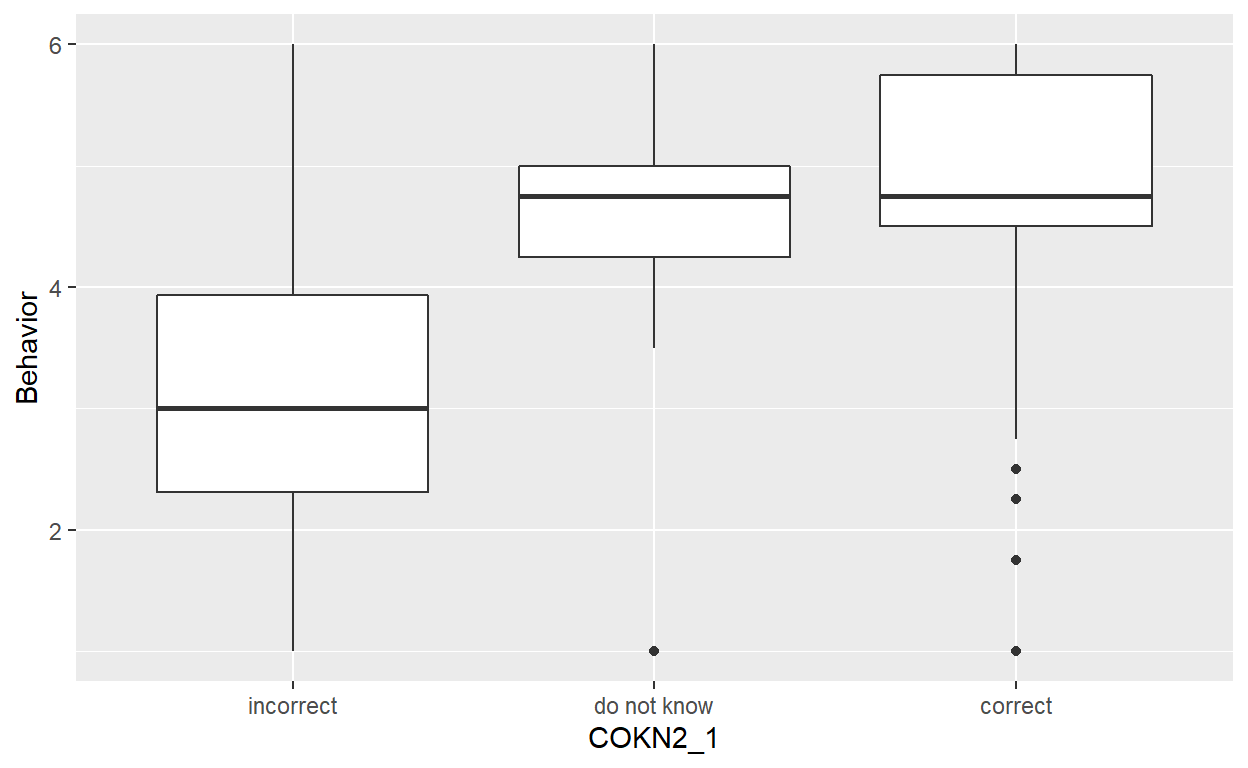
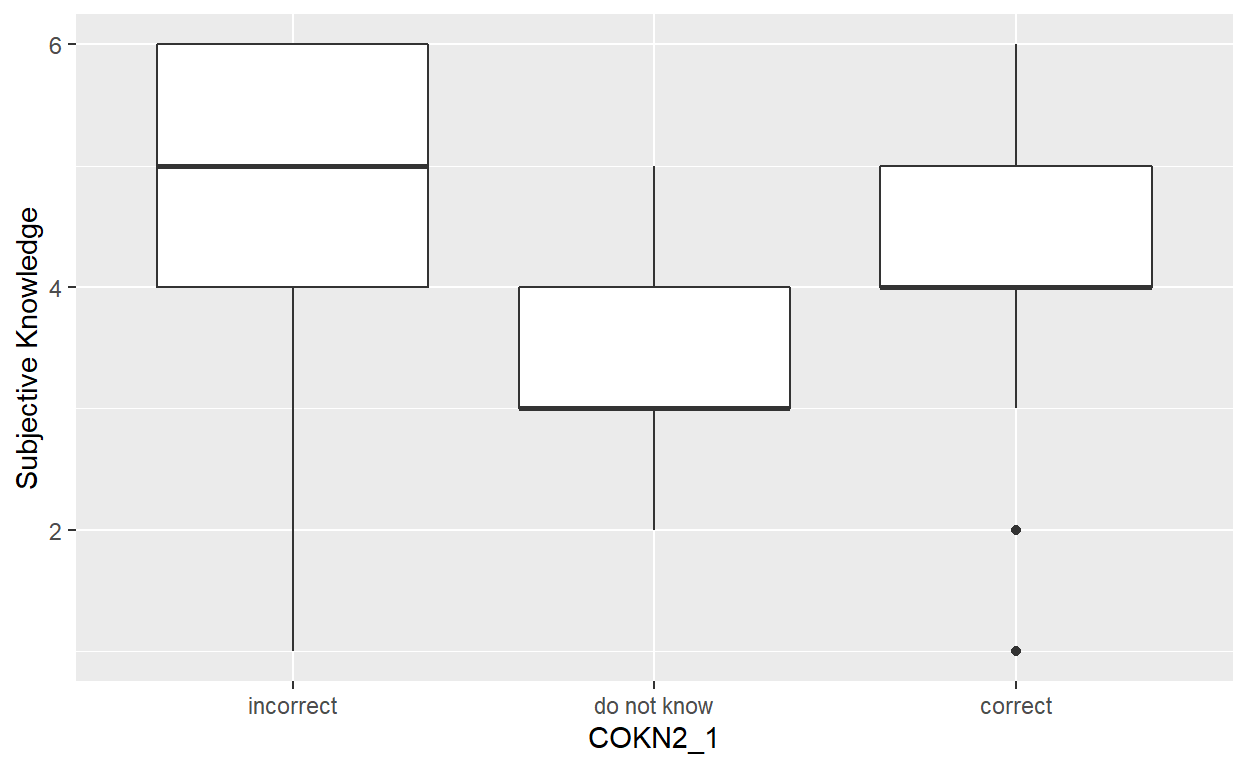
Respondents who hold incorrect information about this show significantly less Behavior. Respondents who are unsure report significantly lower Subjective Knowledge than both other groups.
More than 1% of people reported to have coronavirus infection in Germany have died in association with coronavirus disease. Correct answer: True.

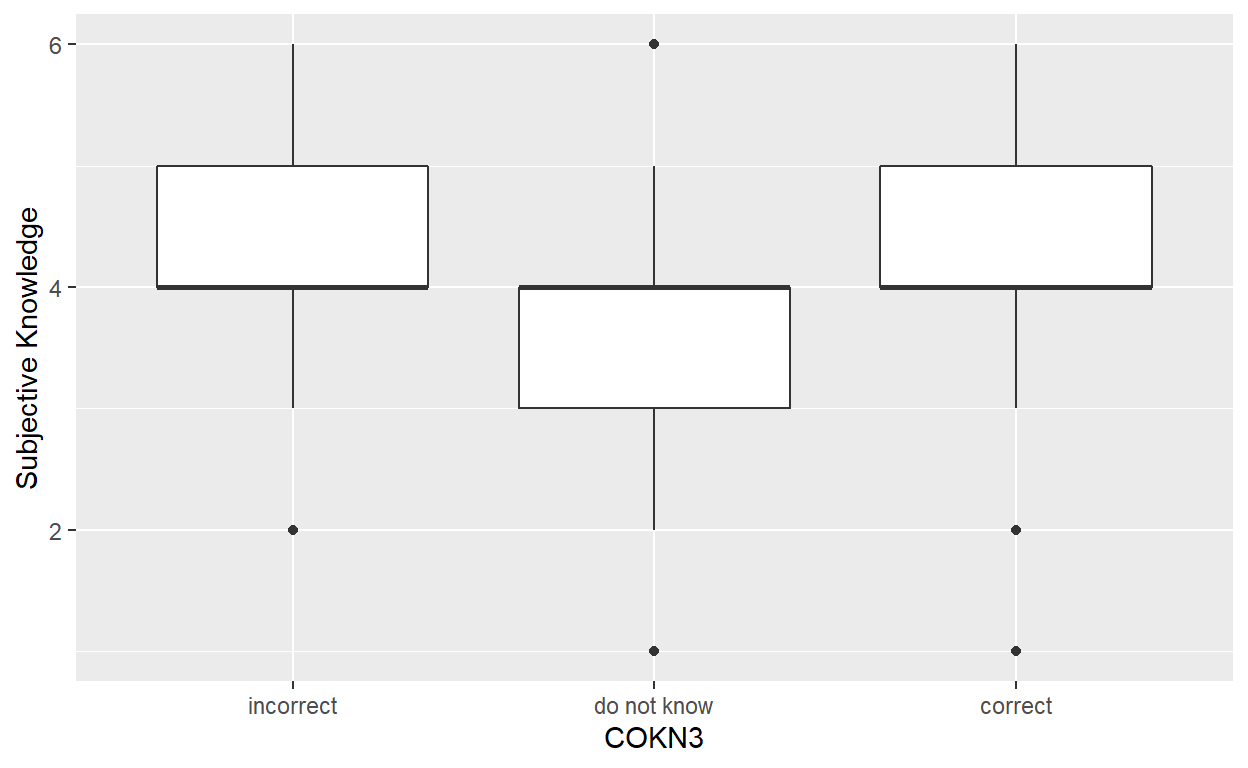
There is a slightly significant difference in Behavior for people who do not know the answer to this to those who know it is correct. Those who do not know also report significantly lower Subjective Knowledge than both the correctly and the misinformed group.
Less than 5% of people reported to be infected with coronavirus in Germany required hospitalization. Correct answer: False.
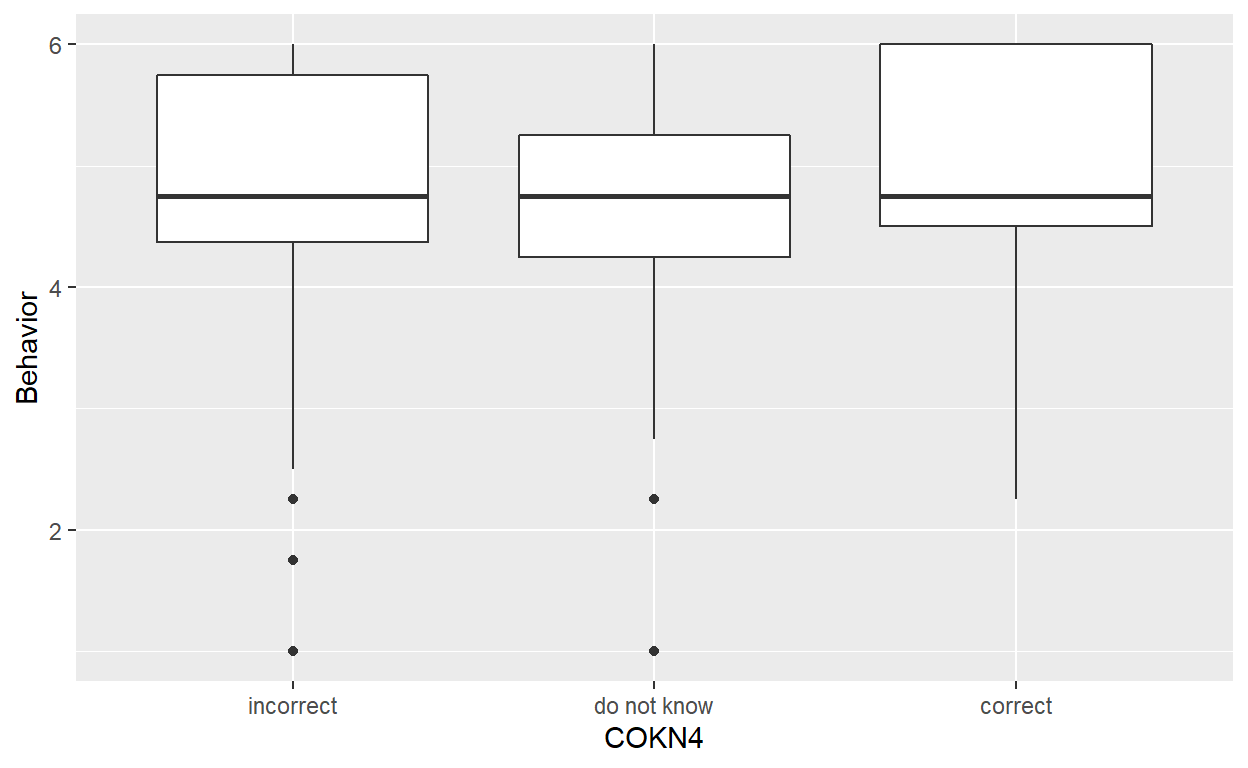
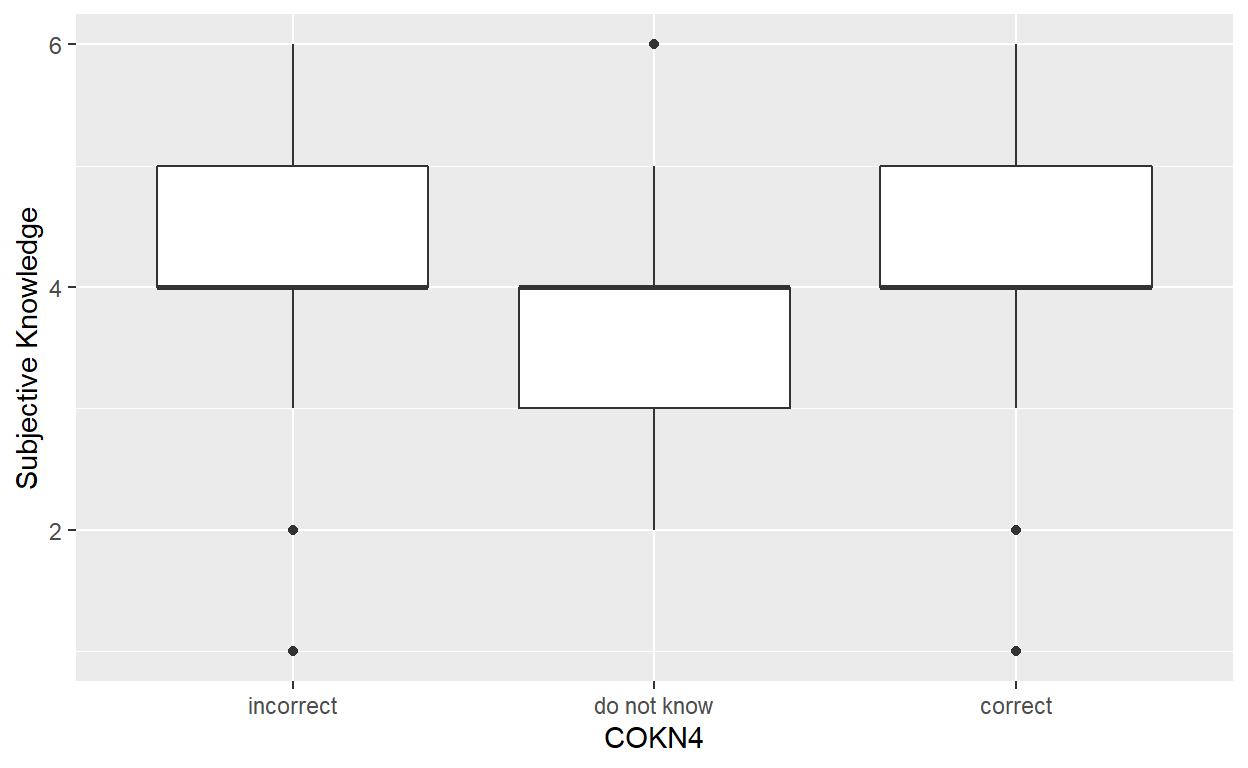
For this question, there is no significant difference in Behavior. The group that does not know the answer reports significantly lower Subjective Knowledge than the misinformed group.
The health effects of COVID-19 coronavirus appear to be more severe in children. Correct answer: False.
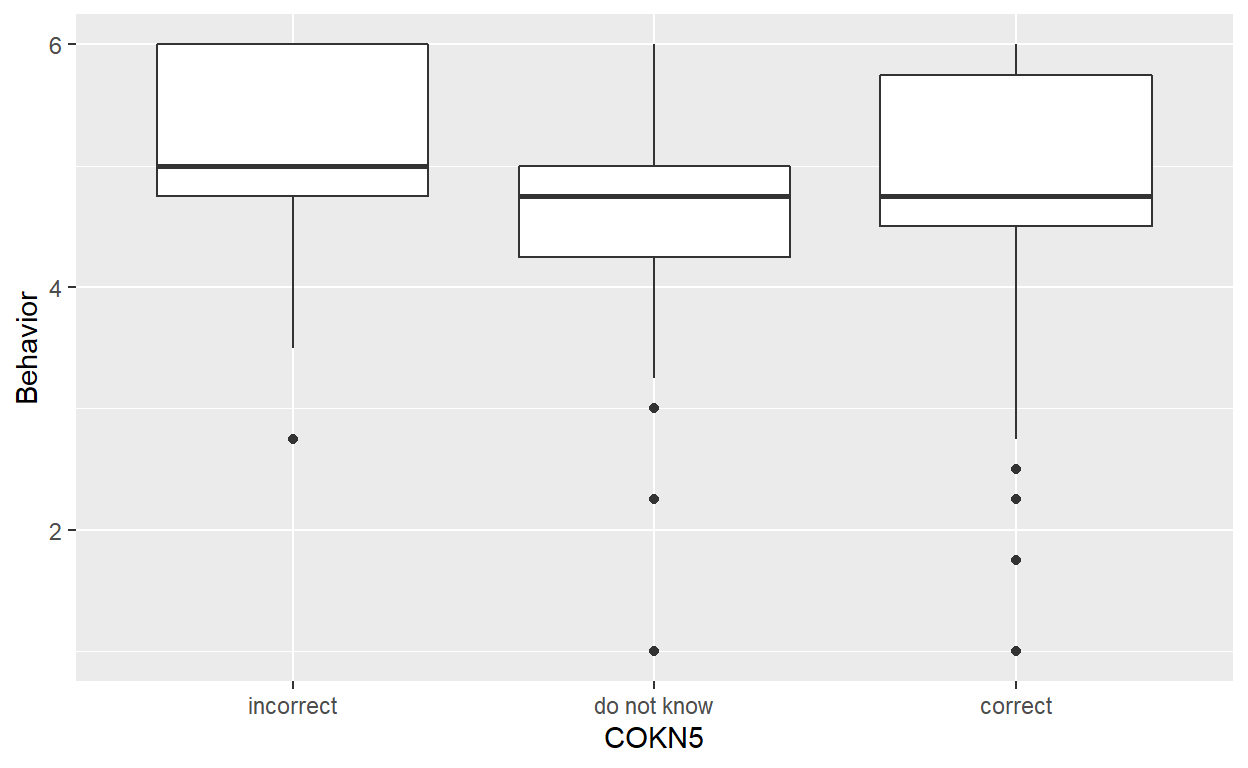
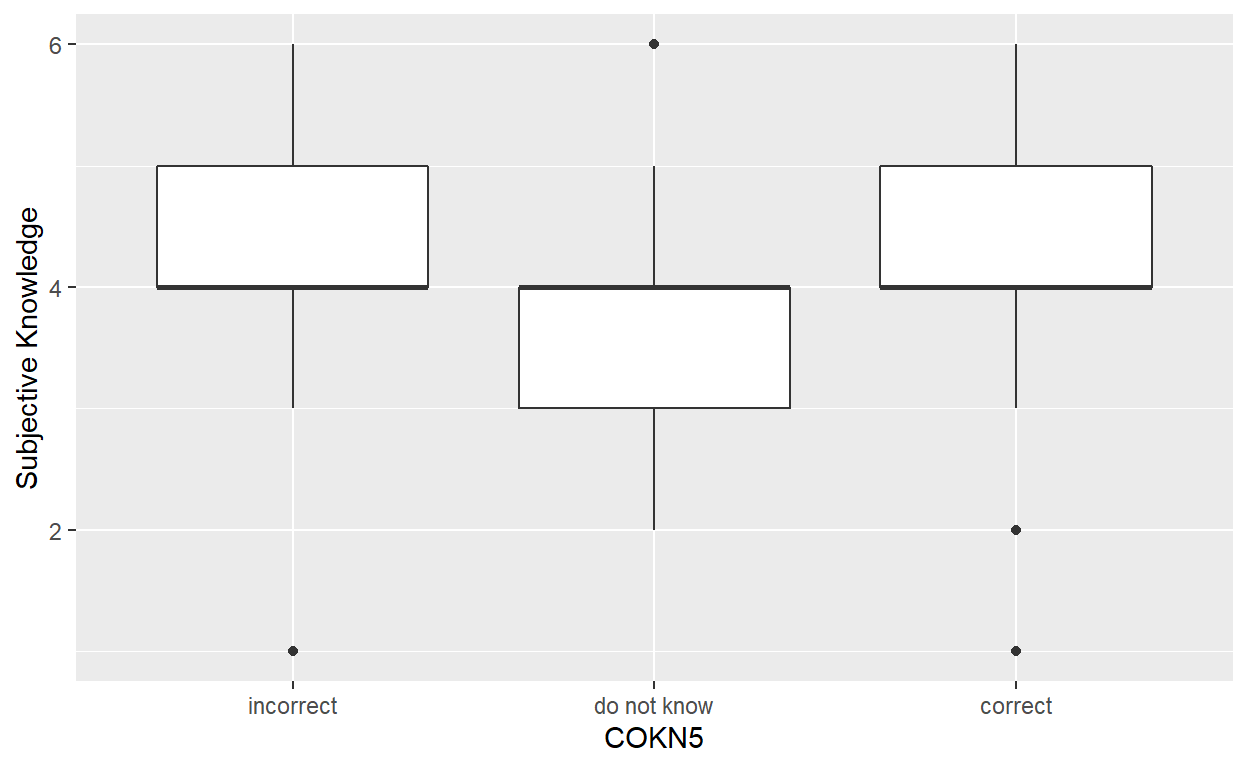
The group who does not know reports both significantly lower Behavior and significantly lower Subjective Knowledge than both other groups.
Antibiotics can treat the coronavirus disease. Correct answer: False.
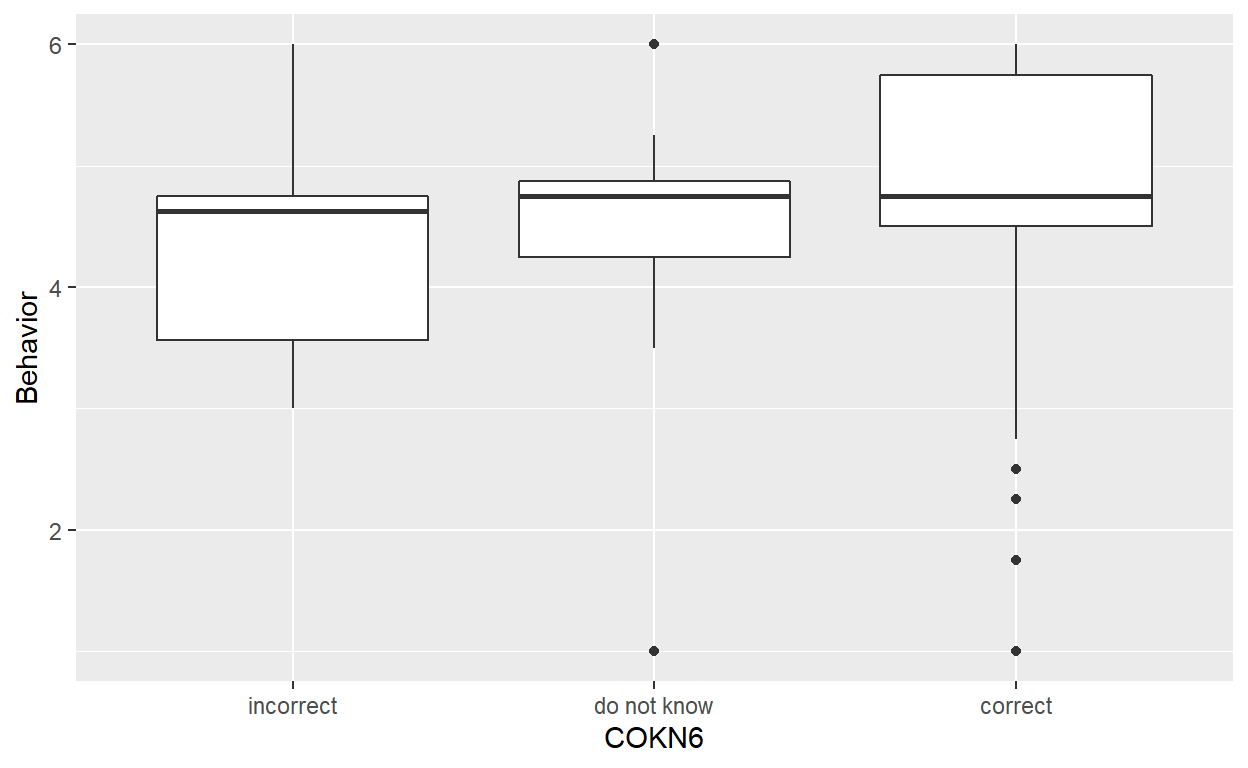
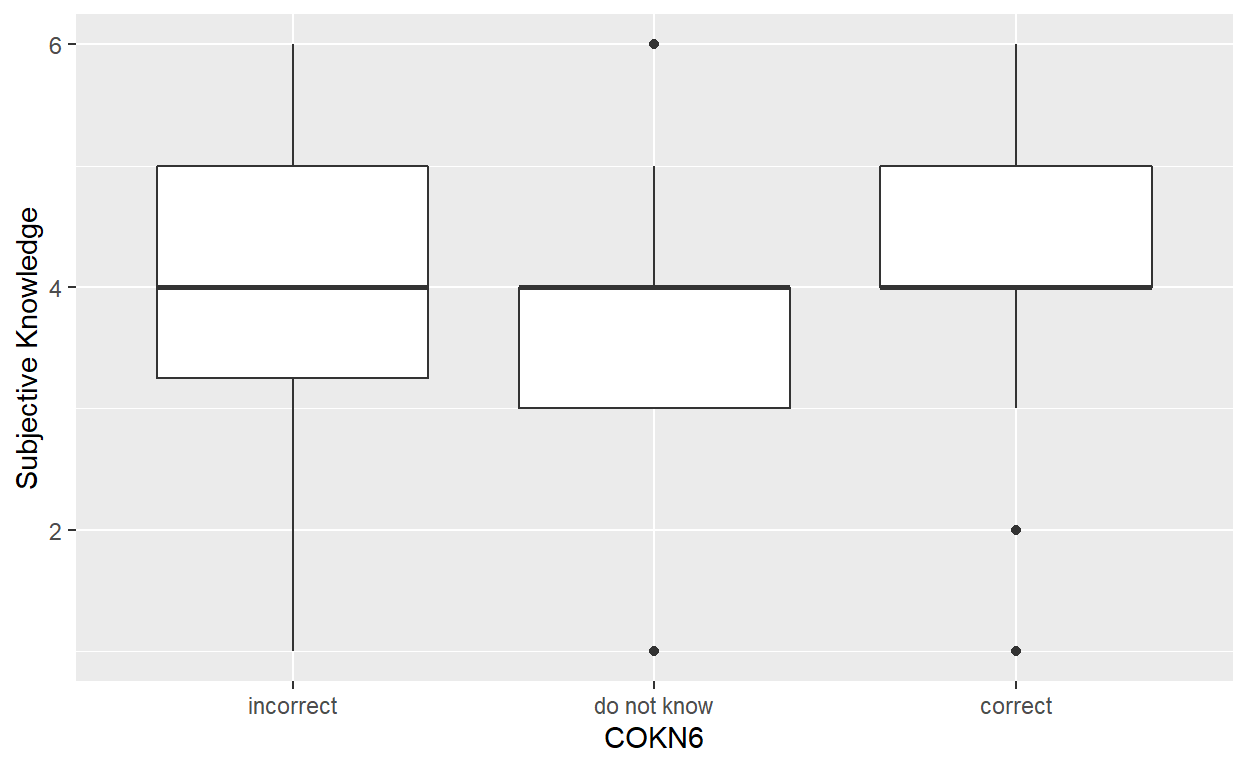
There is no significant difference in behavior between the groups. The group that does not know the answer again reports significantly lower Subjective Knowledge.